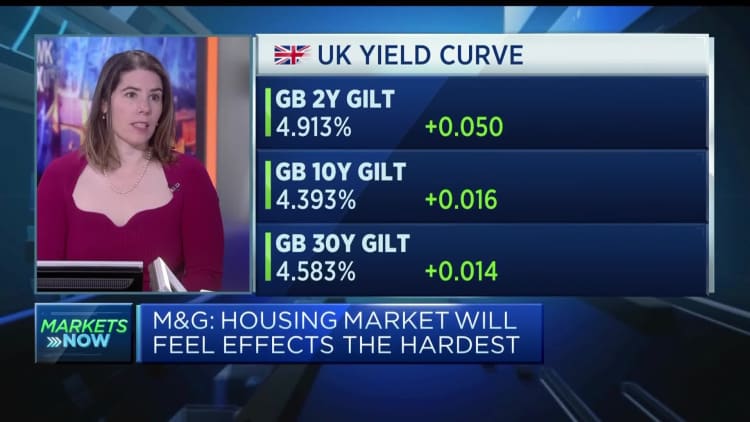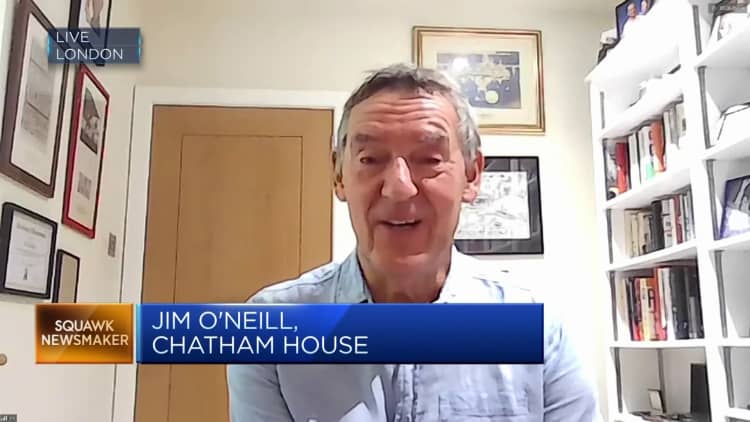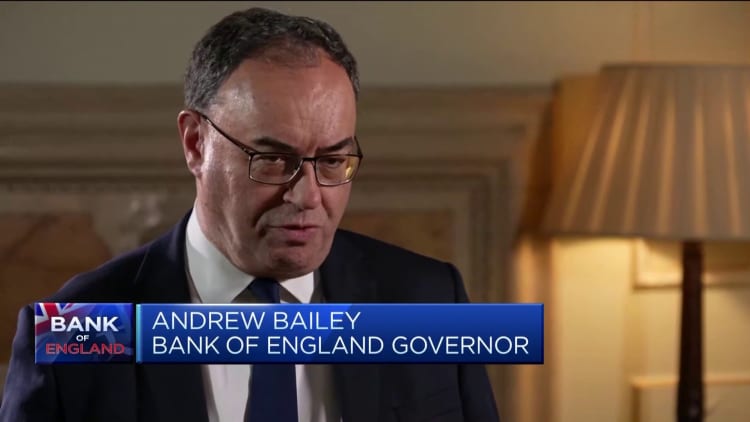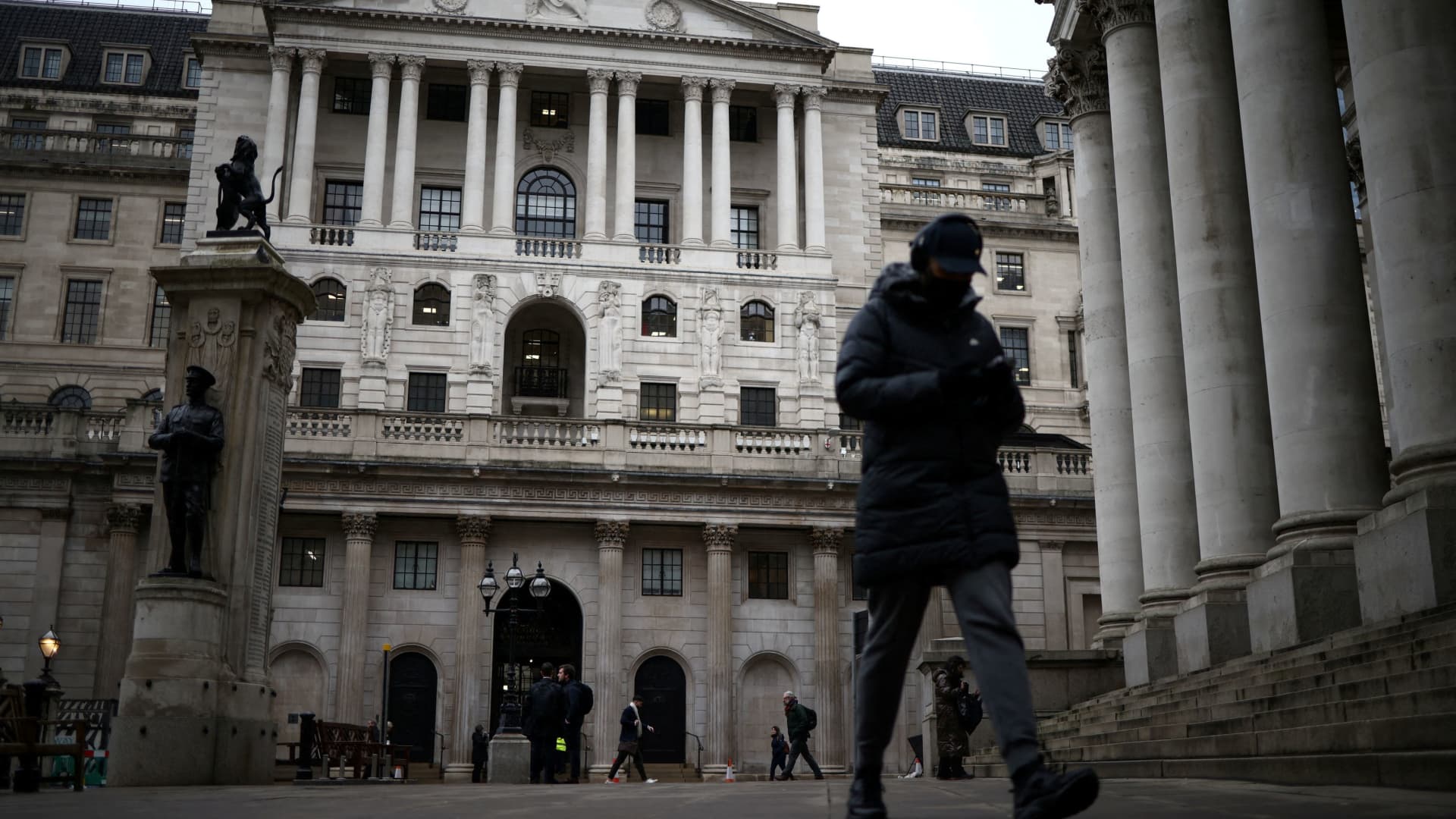People walk outside the Bank of England in the City of London financial district, in London, Britain, January 26, 2023.
Henry Nicholls | Reuters
LONDON — The Bank of England’s swift bond sales are creating a unique investment opportunity, according to Christopher Mahon, head of dynamic real return at Columbia Threadneedle.
After purchasing £895 billion ($1.12 trillion) of U.K. government bonds, known as gilts, during the low-interest-rate period following the 2008 financial crisis, the central bank is now quickly unwinding its holdings.
Mahon notes that the Bank of England has been the most aggressive among central banks in selling the bonds purchased during quantitative easing. This unprecedented scale of bond sales is occurring during a time of high inflation and substantial rate hikes.

“The Bank of England’s selling of bonds on an unprecedented scale has created concerns and market uncertainty due to the rapid pace and its effect on gilt prices,” Mahon stated in a video blog last week.
The central bank’s bond sales have resulted in significant losses, which are being covered by the U.K. Treasury. As of late July, the central bank estimated that the Treasury would indemnify £150 billion ($189 billion) of losses on its asset purchase facility (APF).
“Our analysis indicates that the reduction in gilt holdings equates to approximately 7.5% of all outstanding government debt. This is a substantial amount and poses challenges for the market,” Mahon explained.
The yield on 10-year U.K. gilts has witnessed a significant increase from 2.99% in early February to a 13-year high of nearly 4.75% in mid-August. This pace of bond sales by the Bank of England surpasses that of the U.S. Federal Reserve and the European Central Bank.
“The motivations behind the Bank’s rapid bond sales remain unclear to us. The quick pace has driven down gilt prices, worsening losses for taxpayers and creating additional burdens for the U.K. Treasury,” Mahon added.
“The U.K. central bank’s aggressive selling pressure is one of the factors why gilts have struggled to attract buyers this year in the market,” he concluded.
Investment opportunity?
The U.K. has a history of selling assets at low points. Between 1999 and 2002, the country controversially sold 401 metric tons of gold at the market’s bottom, out of a total holding of 715 tonnes.

Mahon believes there are similarities between the current disposal of gilts by the Bank of England and its past sale of gold.
“The Bank’s pre-announcements of sales, lack of interest in the achieved prices or the extent of losses, and market concerns about an accelerating pace of sales all mirror the previous gold sell-off,” he stated.
“In our assessment, the Bank of England’s actions could mark the bottom of the market once again.”
A spokesperson for the Bank of England declined to comment on the matter when contacted by CNBC.
Mahon also mentioned that with inflation dropping and peak interest rates approaching, this could be an attractive opportunity for investors in gilts and fixed income.
The Bank of England’s Monetary Policy Committee is scheduled to meet on Sept. 21. At its last meeting, the committee did not provide further details on its plans for gilt sales. However, Deputy Governor Dave Ramsden suggested in July that the pace of quantitative tightening could increase.
In a research note, BNP Paribas economists predicted that the central bank would raise its annual pace of gilt sales from £80 billion to £95 billion.
The Bank of England contests the notion that the asset sales are significantly impacting the markets. Ramsden stated in his July speech that quantitative tightening has a smaller effect on gilt yields compared to quantitative easing.
“Based on our analysis so far, a one-off additional £80 billion of quantitative tightening is likely to increase 10-year gilt yields by less than 10 basis points in the current market conditions,” Ramsden explained.

Denial of responsibility! Vigour Times is an automatic aggregator of Global media. In each content, the hyperlink to the primary source is specified. All trademarks belong to their rightful owners, and all materials to their authors. For any complaint, please reach us at – [email protected]. We will take necessary action within 24 hours.


